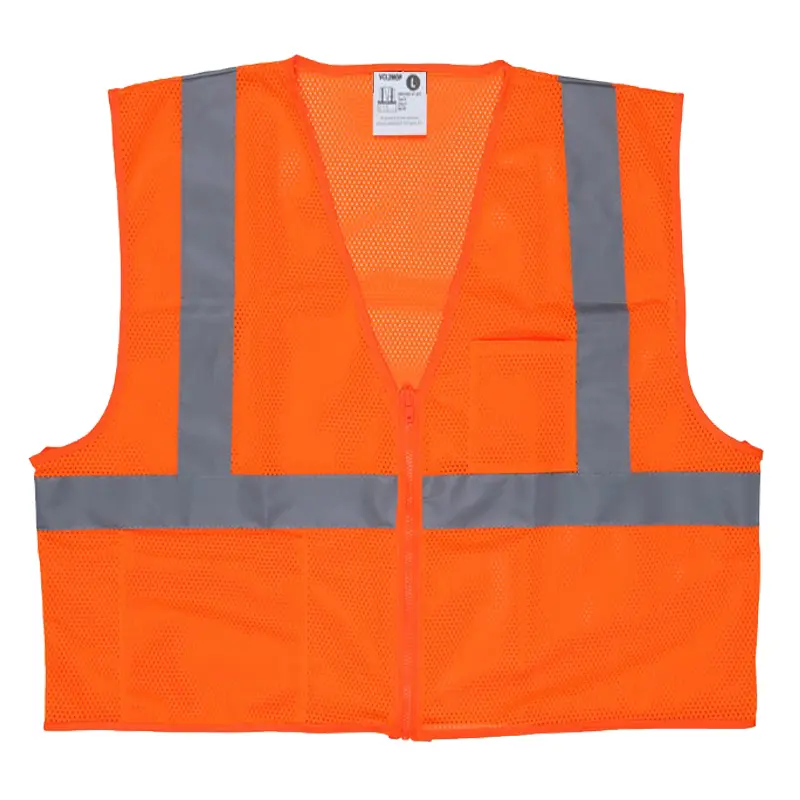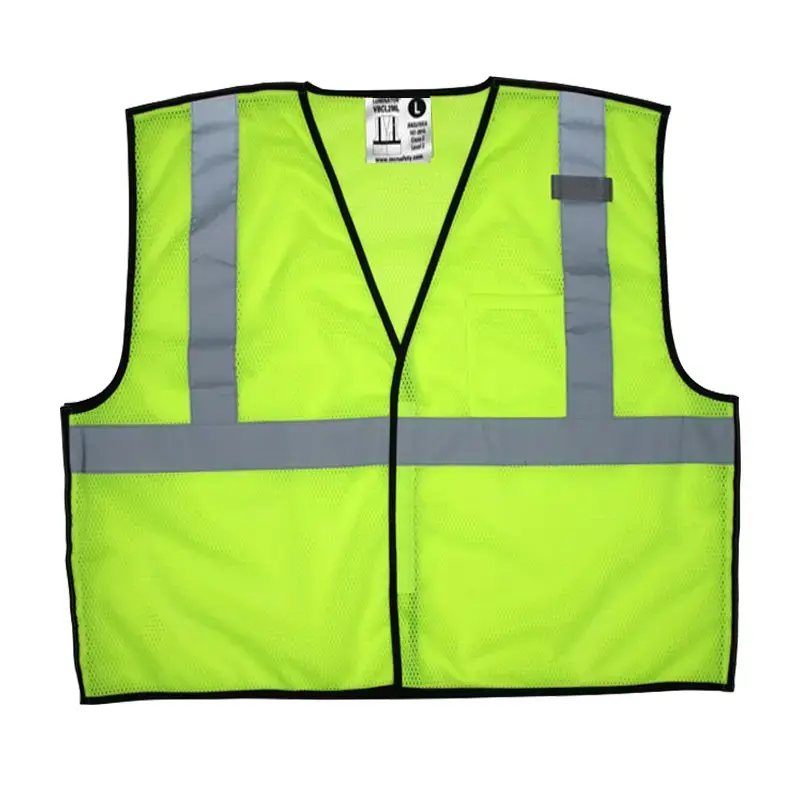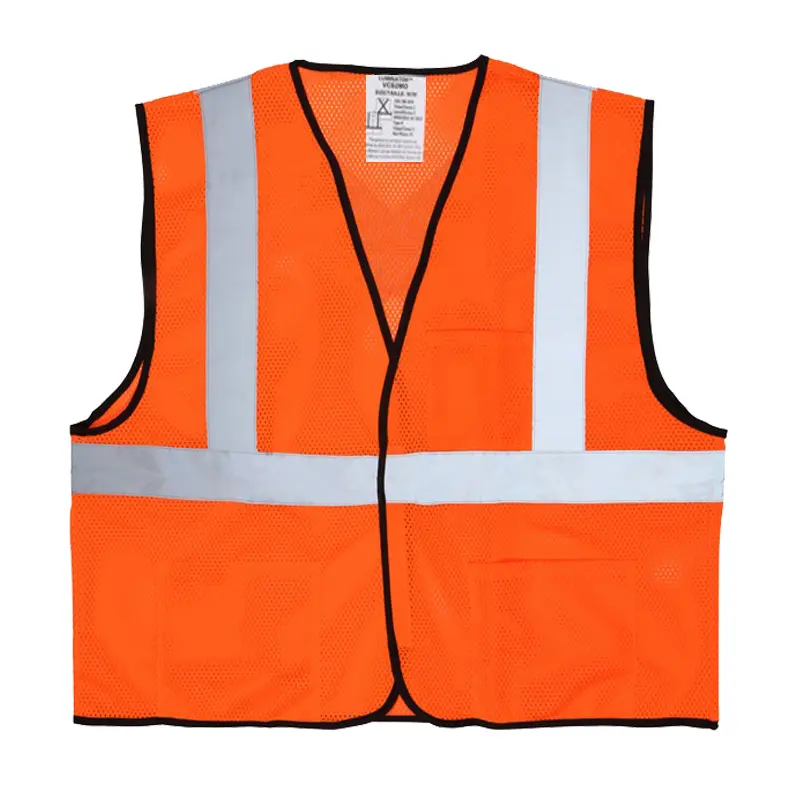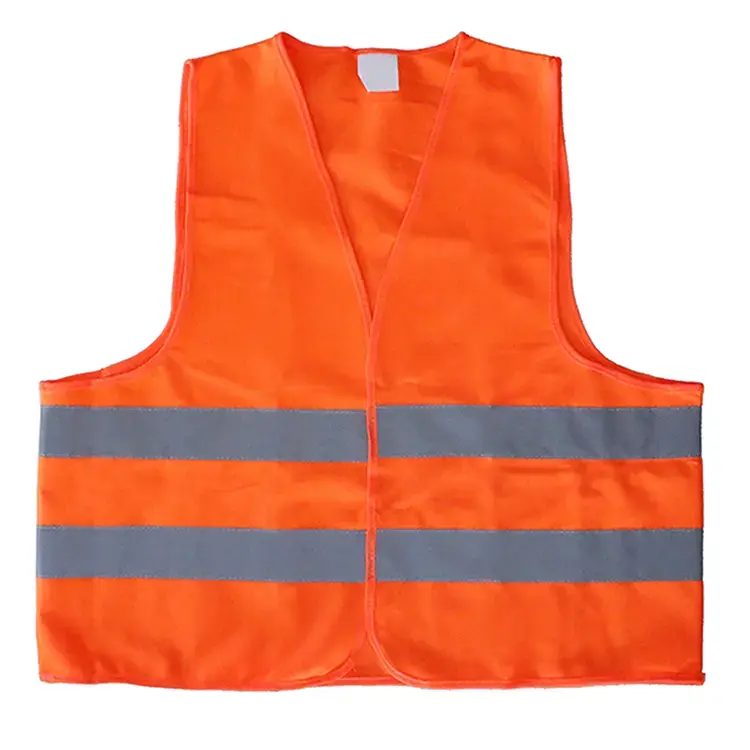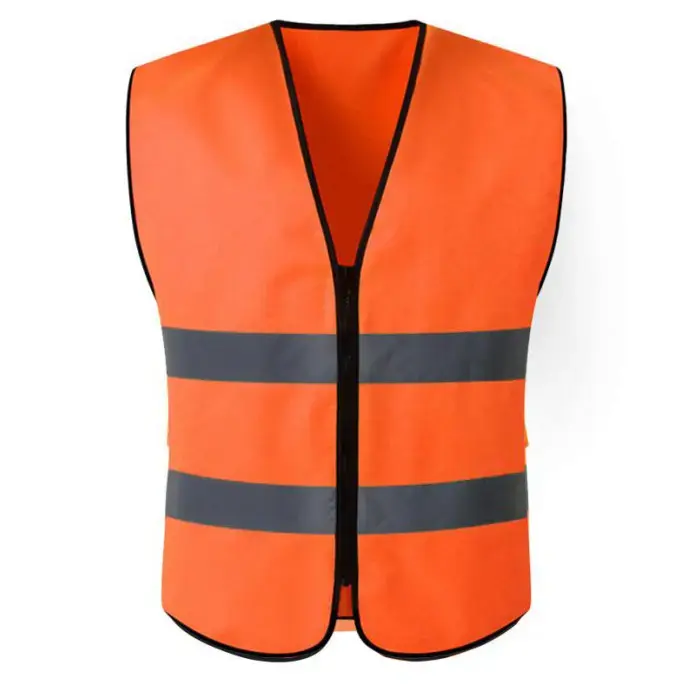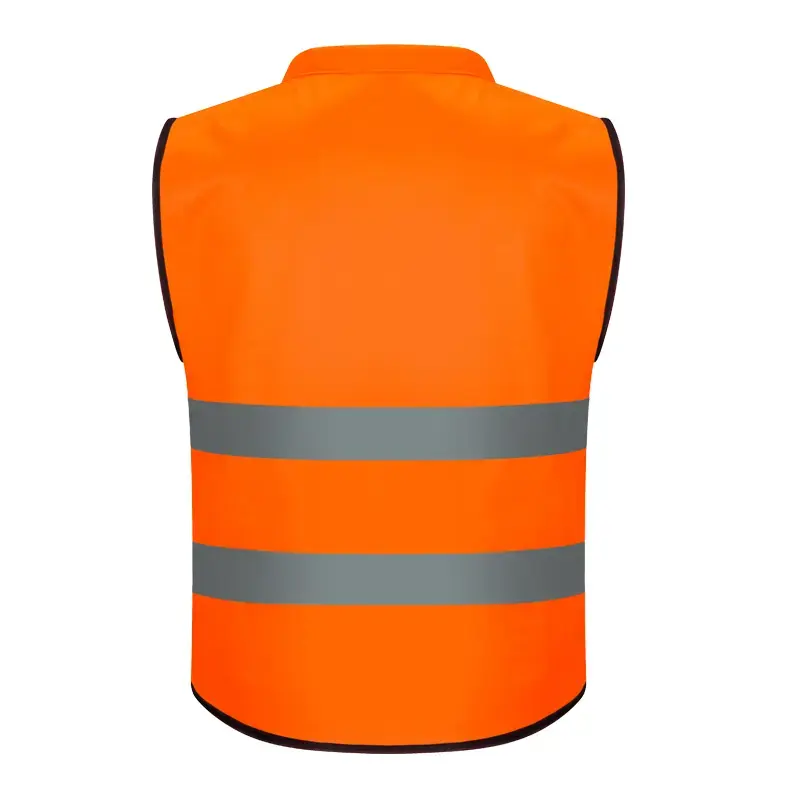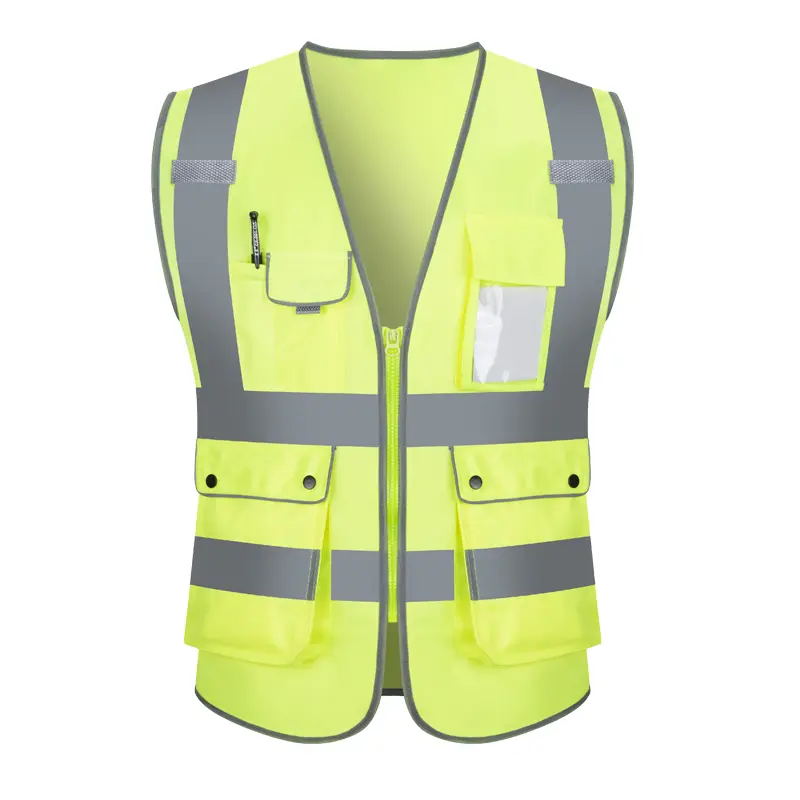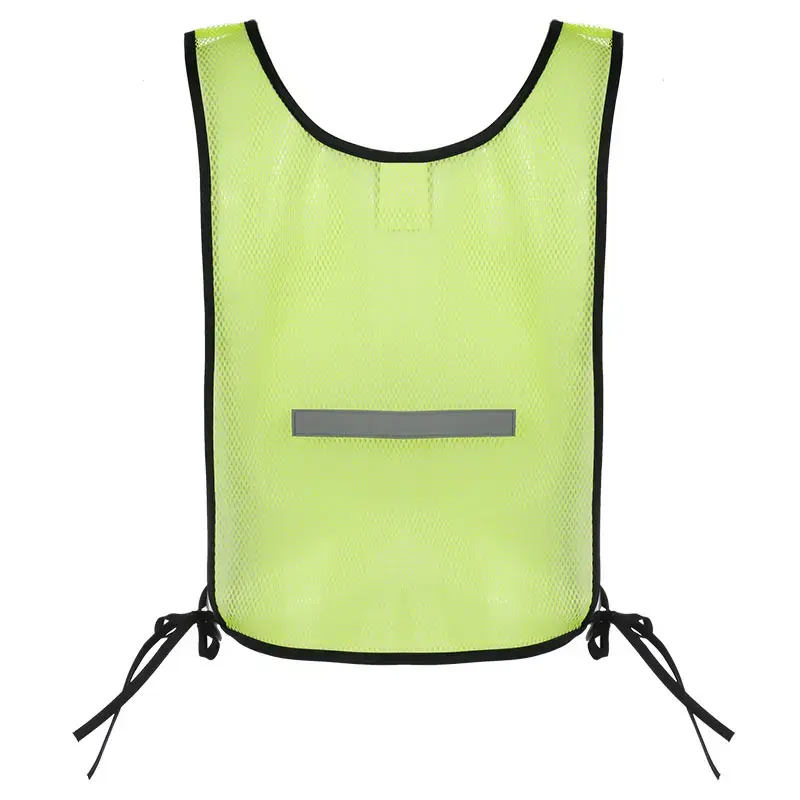How to choose the right reflective material
How to choose the right reflective material: a detailed guide to the independent station of Reflective Safety Vests
In today's international market, reflective safety vests have become a key equipment for many industries to ensure the safety of workers, and the demand for international trade continues to grow. As the core component of reflective safety vests, reflective materials directly determine the reflective performance, durability and market competitiveness of the vests. The following content will explain how to choose the right reflective materials from multiple perspectives.
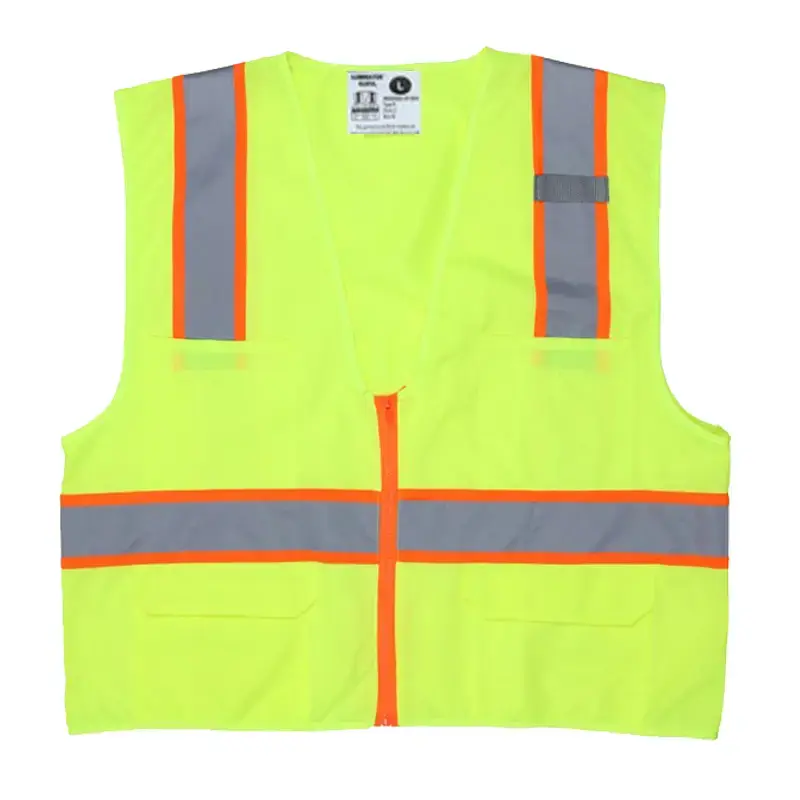
I. The importance and market potential of reflective safety vests
(I) Importance
In low-light environments and poor visibility conditions such as night, reflective safety vests can reflect light sources such as car lights back to the observer's eyes, so that the wearer's outline is clearly visible, significantly improving their visibility and effectively reducing the occurrence of traffic accidents. For outdoor workers such as construction workers, road construction workers, traffic police, sanitation workers, as well as groups such as cyclists and runners, reflective safety vests are indispensable equipment to ensure their life safety.
(II) Market potential
With the acceleration of global urbanization and the continuous improvement of people's awareness of traffic safety, the demand for reflective safety vests is growing. According to data from market research institutions, the market size of reflective safety vests has shown a steady growth trend in recent years, and is expected to maintain a high growth rate in the next few years. This provides a broad market space for independent stations to carry out international wholesale business of reflective safety vests.
2. Common reflective materials and their characteristics
(I) Glass bead reflective material
Glass beads are one of the earliest materials used in reflective clothing. Its reflective principle is based on Retro-Reflection, that is, light is reflected back to the direction of the light source through the surface of the glass beads. This material is usually composed of glass beads with a diameter between 100 microns and 1000 microns, which are fixed in reflective cloth or reflective film.
Advantages: Relatively low cost, good reflective effect, can provide more obvious reflection at different angles, suitable for the production of various medium and low-end reflective safety vests, and can meet the use needs in most ordinary scenes, such as urban road construction, around schools, etc.
Disadvantages: The wear resistance and anti-aging performance are relatively poor. In severe weather conditions or after long-term use, the reflective effect will gradually weaken. In addition, the reflective brightness of glass microbead reflective materials is not as good as that of microprismatic reflective materials, and may not meet the needs in some special environments with high risks and extremely high requirements for reflective performance.
(II) Microprismatic reflective materials
Microprismatic reflective materials use advanced microprismatic technology to reflect light back to the light source through tiny prisms. Its reflective effect is stronger and more concentrated than that of glass microbead reflective materials, and it can provide higher visibility at a longer distance.
Advantages: It has excellent reflective performance and can maintain good reflective effects even under extremely low light conditions. It is an ideal choice for manufacturing high-quality reflective safety vests. It is especially suitable for high-risk working environments such as mines, tunnels, and highways, as well as outdoor activities such as night running and cycling that require extremely high safety. At the same time, microprismatic reflective materials have excellent wear resistance, weather resistance, and anti-aging properties, and have a longer service life.
Disadvantages: The cost is high, which to a certain extent limits its application in large-scale procurement. However, with the continuous advancement of production technology and the growth of market demand, its price is gradually declining and is gradually being accepted by more international wholesale buyers.
(III) Reflective cloth and reflective film
Reflective cloth and reflective film are made of materials such as resin, pigment and glass beads, and are the most common reflective materials on the market. Reflective cloth has a certain degree of flexibility and can be cut and sewn like ordinary cloth. It is suitable for making various styles of reflective safety vests and can meet the requirements of different customers for vest design and comfort. Reflective film has higher reflective intensity and longer service life. It is usually attached to the surface or specific parts of the vest to enhance the reflective effect.
Advantages: The production process of reflective cloth and reflective film is relatively mature, the product performance is stable and reliable, and it can provide good reflective performance and durability. The price is moderate and it has a high cost performance ratio. It is suitable for the production of mid-to-high-end reflective safety vests. In addition, they have various styles and can be customized according to different needs and fashion trends to meet the aesthetic requirements of different industries and user groups.
Disadvantages: Compared with microprismatic reflective materials, the reflective brightness and visible distance of reflective cloth and reflective film are relatively short, and may not provide sufficient safety protection in some special high-risk environments. At the same time, reflective film requires certain technical requirements during cutting and installation, and improper operation may affect its reflective effect.
3. Quality standards and testing methods for reflective materials
(I) Quality standards
International standards: EN20471 is a high-visibility warning clothing standard widely adopted in Europe, which clearly stipulates the reflective coefficient, color, size, position, etc. of reflective materials. For example, the retroreflective coefficient of reflective materials must reach a certain minimum value at different wavelengths and observation angles to ensure visibility under various lighting conditions. In addition, ISO 20471 is also one of the internationally common high-visibility safety clothing standards. It is similar to EN20471 in many aspects and has been recognized and applied by more and more countries around the world.
National standards: In China, the technical requirements of GB20653-2020 for reflective safety vests include material requirements, color requirements, retroreflective coefficient requirements of reflective materials, and other aspects. For example, reflective materials should meet the requirements of relevant standards, have good reflective performance, weather resistance, wear resistance and flame retardancy, etc., and their retroreflective coefficient must meet the minimum value specified in the standard to ensure that they can reflect light at night or in dimly lit environments, providing sufficient safety protection for the wearer.
(II) Detection method
Retroreflective coefficient test: This is one of the key indicators to measure the reflective performance of reflective materials. Through a professional retroreflective coefficient tester, according to the test conditions and methods specified in the standard, the retroreflective coefficient of the reflective material at different incident angles and observation angles is tested. For example, tests are carried out under conditions such as an incident angle of 0°, and observation angles of 0.2°, 0.5° and 1° to evaluate the reflective effect of the reflective material in different usage scenarios.
Abrasion resistance test: Using an abrasion tester, the reflective material is fixed on the sample table, and after a certain number of frictions with the specified abrasive and pressure, the surface wear of the reflective material is observed, including the degree of loss of reflective brightness, whether there are scratches or damage on the surface, etc. At the same time, the wear resistance of reflective materials can also be quantitatively evaluated by comparing the retroreflective coefficients before and after the test.
Weather resistance test: expose the reflective material to specific environmental conditions, such as high temperature, high humidity, ultraviolet radiation, acid rain, etc. After a certain period of time, test its reflective performance, color change, strength retention rate and other indicators to examine the reflective material's resistance to various environmental factors during actual use. For example, a 500-hour UV aging test is conducted to simulate the impact of sunlight on the reflective material, and then test the change in its retroreflective coefficient.
4. Factors affecting the selection of reflective materials
(I) Use environment and scene
High-risk working environment: such as mines, tunnels, construction sites, etc., these places usually have dangerous factors such as falling rocks, blasting, fire, mechanical collision, etc., and the reflective performance and protective performance of reflective safety vests are extremely high. In this case, microprismatic reflective materials and plain weave cloth with high wear resistance and high strength should be given priority to ensure that the reflective safety vest can play a long-term and stable role in complex and harsh environments and effectively protect the lives of workers.
Adverse weather conditions: In rainy, snowy, foggy and other weather conditions with low visibility, the reflective effect of reflective safety vests may be affected. Therefore, it is necessary to choose reflective materials with good waterproof performance and high reflective brightness, such as PVC reflective film. At the same time, the anti-fog performance of the material should also be considered to prevent the reflective effect from being reduced due to fogging on the surface of the reflective material.
General outdoor environment: For general outdoor environments such as urban road construction, around schools, and parks, reflective safety vests made of glass bead reflective materials and mesh cloth can be selected. This type of material has relatively low cost, good breathability, and is comfortable to wear. It can meet daily safety needs and reduce procurement costs to a certain extent.
(II) Operation intensity and frequency
High-intensity operation: If workers need to perform high-intensity physical labor outdoors for a long time, such as road construction, cargo loading and unloading, etc., reflective safety vests need to have good wear resistance and tear resistance to resist damage to the vests caused by external forces such as friction and pulling during the operation. Therefore, we should choose a main material with thicker texture and higher strength, such as plain cloth and Oxford cloth, and match it with reflective materials with good wear resistance, such as micro-prismatic reflective materials or specially treated glass micro-bead reflective materials, to extend the service life of the vest, reduce the frequency of replacement, and reduce the cost of use.
Low-intensity work: For some jobs with lower work intensity, such as traffic control and sanitation cleaning, although safety needs to be paid attention to, the durability requirements for reflective safety vests are relatively low. At this time, you can choose a main material such as mesh cloth that is light and breathable and ordinary glass micro-bead reflective materials to improve the comfort of wearing, reduce the burden on staff, and ensure sufficient visibility during work.
(III) Cost budget
Large-scale procurement: For international wholesale buyers, cost control is an important consideration. If the purchase volume is large and the budget is limited, you can choose reflective safety vests made of glass micro-bead reflective materials and mesh cloth. These materials are relatively cheap, can meet basic safety needs, and can obtain certain price advantages when purchasing on a large scale, reducing the overall procurement cost.
High-end market procurement: If the target market of the purchaser is mainly high-end customer groups with extremely high requirements for quality and safety, such as professionals in the petroleum, chemical, and electric power industries, or reflective safety vests for special occasions, such as police and firefighting, then microprismatic reflective materials and high-quality main body materials should be given priority. Although the cost of such materials is relatively high, their excellent reflective performance and durability can provide users with more reliable safety protection, meet the needs of the high-end market and customer expectations, and help to enhance the added value and market competitiveness of products.

5. How to display information about reflective materials in an independent website
(I) Detailed introduction to the types and characteristics of reflective materials
In the blog of the independent website, the composition, reflective principle, advantages and disadvantages, and applicable scenarios of each reflective material should be elaborated in detail, so that international wholesale buyers can fully understand the characteristics and performance differences of different reflective materials. You can use a combination of pictures and texts to insert real pictures of reflective materials, structural diagrams under microscopes, and actual application effect diagrams, so that readers can more intuitively feel the characteristics and effects of various reflective materials. For example, when introducing glass microbead reflective materials, you can show the distribution of glass microbeads in the fabric and the comparison of reflective effects under different lighting conditions; when explaining microprism reflective materials, you can provide a three-dimensional structural diagram of the microprism and photos of its actual use in high-risk environments to help buyers better understand the advantages and scope of application of these materials.
(II) Comparative display of the performance and indicators of different reflective materials
By making a detailed comparison table, quantitatively compare the key performance indicators of various reflective materials, such as retroreflection coefficient, wear resistance, weather resistance, waterproofness, price, etc. This intuitive comparison method can help international wholesale buyers quickly screen out reflective materials that meet their specific needs and improve the efficiency of purchasing decisions. At the same time, the test standards and methods of each performance indicator can be briefly described in the table to enhance the credibility and professionalism of the data. For example, the test values of the retroreflective coefficients of several common reflective materials such as glass microbead reflective materials, microprism reflective materials, reflective cloth and reflective film under different conditions are compared, and the minimum values required by the corresponding standards are marked, so that buyers can see the difference in reflective performance of different materials at a glance.
(III) Provide test reports and certification information of reflective materials
In order to enhance the trust of international wholesale buyers in products, authoritative test reports and certification certificates of reflective materials should be displayed on independent sites. These reports and certificates should be issued by qualified third-party testing agencies, including test results of reflective performance, physical properties, chemical properties and other aspects of reflective materials, as well as certification information of relevant international standards and national standards. For example, display the EN20471 certification, ISO 20471 certification, GB20653 - 2020 standard test report, etc. passed by the reflective material, so that buyers can be assured that the reflective materials used in the reflective safety vests they purchase are of reliable quality, meet performance standards, and meet the access requirements of the international market. At the same time, the key contents in the test report and certification certificate can be interpreted and explained to help buyers better understand their meaning and importance.
(IV) Share actual application cases and customer feedback
In the blog of the independent station, share some actual application cases of reflective safety vests in different industries and scenarios, and introduce in detail the reflective materials used and their advantages and effects in actual use. At the same time, collect and display feedback and evaluations from customers, especially the use experience and satisfaction of international wholesale buyers, and use real cases and word of mouth to prove the quality and performance of the product. For example, after a construction company used reflective safety vests made of micro-prismatic reflective materials, the safety of tunnel construction was significantly improved, and workers were more easily found when working at night, reducing the occurrence of accidents; or a municipal department purchased a large number of reflective safety vests made of glass micro-bead reflective materials for urban road construction, and reported that the vests had good reflective effects in daily use and were affordable, meeting their needs for large-scale procurement. These actual cases and customer feedback can provide references for potential international wholesale buyers and enhance their confidence in the products and willingness to buy.
6. Key points for communicating with international wholesale buyers about reflective materials
(I) Understand the specific needs and requirements of buyers
When communicating with international wholesale buyers, first of all, you should have a deep understanding of their specific needs, including the use scenarios of the purchased reflective safety vests, target customer groups, working environment characteristics, required reflective performance levels, special requirements for materials (such as waterproof, flame retardant, anti-static, etc.) and cost budgets. Through detailed inquiries and communication, accurately grasp the key points of the buyers' needs so as to recommend the most suitable reflective materials and product solutions for them. For example, for a buyer who mainly provides labor protection products for mining companies, it is necessary to focus on understanding the particularity of the mining working environment, such as whether there are explosive gases, high temperatures, humidity and other factors, as well as the specific requirements of mining companies for the reflective performance, durability and protective performance of reflective safety vests, so as to recommend micro-prismatic reflective materials and reflective safety vests with flame retardant and anti-static functions.
(II) Highlight the advantages and selling points of the products
According to the needs of buyers, highlight the advantages and selling points of the recommended reflective materials and reflective safety vests made of them in a targeted manner. For example, if the buyer pays attention to the reflective performance and safety of the product, focus on emphasizing the excellent reflective effect of micro-prismatic reflective materials in high-risk environments and its safety performance that meets international high standards; if the buyer is more sensitive to cost, focus on introducing the cost-effectiveness of glass micro-bead reflective materials and their good application effects in general scenarios. At the same time, it is necessary to combine the actual characteristics and performance data of the product, use specific examples and data to support the advantages of the product, so that buyers can more intuitively feel the value and competitiveness of the product. For example, you can provide the reflective distance and viewing angle data of the reflective safety vests tested in actual use, or show its durability test report in harsh environments, so that buyers can be assured that the quality of the product is reliable and can meet their needs.
(III) Provide professional solutions and after-sales service
In addition to providing high-quality products, professional solutions and perfect after-sales service should also be provided to international wholesale buyers. In communication, show buyers that the company has the ability to customize production according to the needs of different customers, such as being able to produce reflective safety vests that meet specific needs according to their specified styles, colors, sizes, reflective material combinations, etc. At the same time, promise to provide timely after-sales service, including handling of product quality issues, product replacement and repair, technical consultation and support, etc. For example, inform buyers that if they encounter any quality problems or have questions about the use of the product during the use of the product, the company will respond and solve it within a certain period of time, and provide information on after-sales repair service outlets around the world. By providing professional solutions and after-sales services, buyers' confidence in cooperation is enhanced and long-term and stable customer relationships are established.
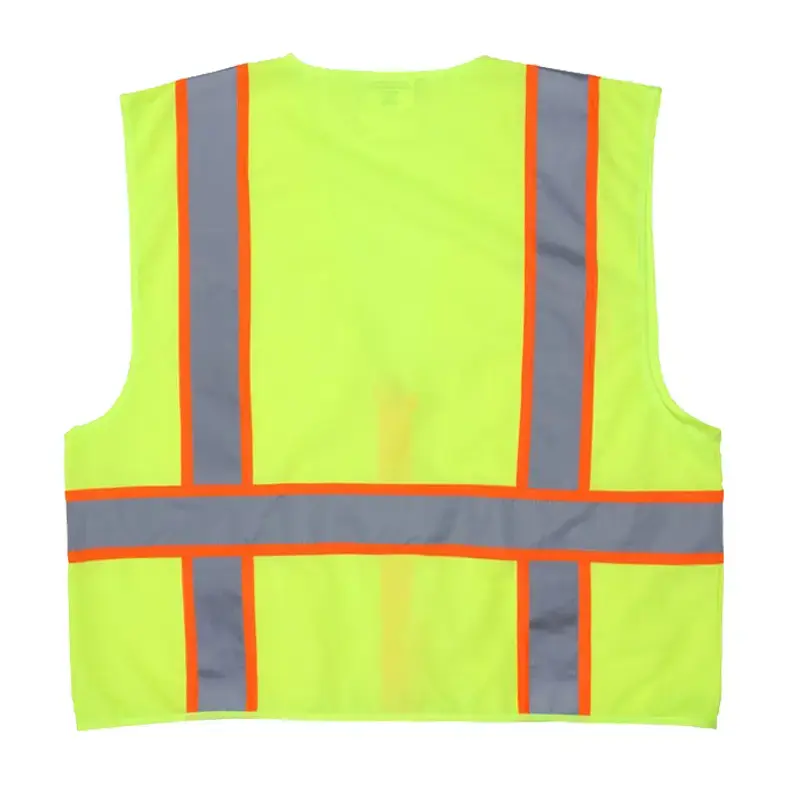
7. Summary
Choosing the right reflective material is crucial for the independent station of reflective safety vests to conduct international wholesale business. By deeply understanding the characteristics, quality standards, testing methods and factors affecting the selection of different reflective materials, and presenting this information comprehensively and professionally in the blog of the independent station, it can help international wholesale buyers better understand and choose reflective safety vest products that meet their needs. At the same time, in the communication with buyers, focusing on understanding their needs, highlighting product advantages, and providing professional solutions and after-sales services will further enhance the competitiveness and market influence of the independent station, promote the sustainable development of the international wholesale business of reflective safety vests, occupy a place in the global safety protection products market, and contribute to improving the safety of outdoor workers.

